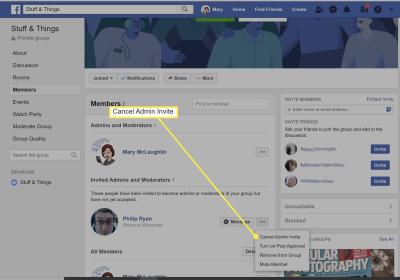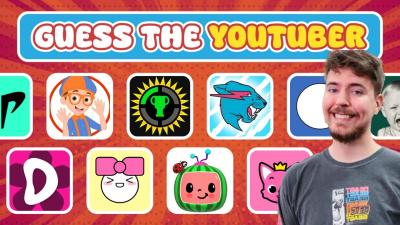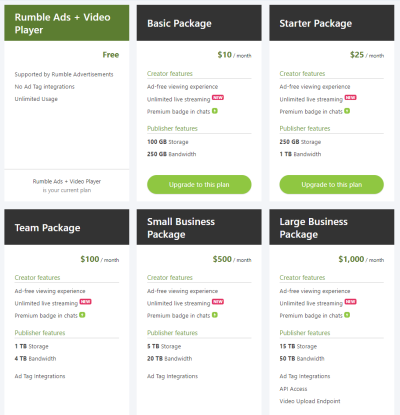The integration of
Artificial Intelligence (AI) in image creation has opened up a new frontier in the realms of photography, graphic design, and digital art. This innovative approach brings with it numerous advantages that are reshaping the industry. Here, we delve into the key benefits of using AI for image creation:
- Enhanced Efficiency and Speed: AI algorithms can process and generate images at a speed unattainable by human efforts. This rapid production allows for quicker turnaround times, especially beneficial in fields requiring a high volume of images, such as digital marketing and online content creation.
- Cost-Effectiveness: By automating the image creation process, AI helps in reducing labor and operational costs. It eliminates the need for multiple revisions and extensive man-hours that traditional image creation often demands.
- Unlimited Creative Potential: AI image generators are not constrained by human imagination. They can produce unique, diverse, and sometimes unexpected visual outputs based on the given input, pushing the boundaries of creativity.
- Accessibility: AI tools have democratized the field of image creation. People without professional training in photography or graphic design can now produce high-quality images, leveling the playing field for smaller businesses and individual creators.
- Customization and Personalization: AI enables the creation of highly customized images tailored to specific requirements, a crucial factor in branding and personalized marketing.
Beyond these, AI in image creation also offers significant advantages in terms of data analysis and pattern recognition, leading to more informed and strategic artistic decisions. The table below illustrates some of the comparative advantages of
AI-generated images over traditional methods:
| Aspect | AI-Generated Images | Traditional Image Creation |
|---|
| Time Efficiency | High (Rapid generation) | Lower (Time-consuming processes) |
| Cost | Generally lower | Can be higher due to manpower and resources |
| Creativity | Limited only by the input and algorithm capabilities | Dependent on individual skills and imagination |
| Customization | Highly customizable | Varies based on skill and resources |
| Accessibility | Accessible to a wide range of users | Requires specific skills and training |
In conclusion, the advent of AI in image creation not only streamlines the creative process but also opens up a world of innovative possibilities, making it an indispensable tool in the modern digital landscape.
How AI Image Generators Work

Understanding the mechanics behind
AI image generators is crucial for appreciating their capabilities and limitations. These advanced systems leverage machine learning and neural networks to convert text descriptions into vivid images. Let's break down the process and explore the key elements of how these generators function:
- Neural Networks and Deep Learning: At the heart of AI image generators are neural networks, particularly those designed for deep learning. These networks are inspired by the human brain's structure and function, capable of processing large amounts of data and recognizing patterns.
- Training the AI: These networks are 'trained' using vast datasets of images and their corresponding descriptions. The AI learns to correlate specific words and phrases with visual elements and styles during this training phase.
- Text-to-Image Synthesis: When a user inputs a text description, the AI analyzes it and references its learned associations to start creating the image. This process involves layering various learned elements and textures to match the description.
- Generative Adversarial Networks (GANs): Many AI image generators utilize GANs, which consist of two parts: a 'generator' that creates images and a 'discriminator' that evaluates them. The generator produces an image, and the discriminator assesses its authenticity (i.e., how close it is to a real image). This feedback loop continues until the image meets a certain quality threshold.
This process can be represented in a simplified flowchart:
| Step | Process |
|---|
| 1. Input | User provides a text description |
| 2. Analysis | AI parses and understands the description |
| 3. Synthesis | AI starts creating the image based on learned data |
| 4. Refinement (GAN) | Image is refined through the GAN process for authenticity and quality |
| 5. Output | Final image is produced and presented to the user |
It's important to note that while AI image generators are powerful, they are not infallible. The quality of the output heavily depends on the clarity of the input text and the extent of the AI's training. Moreover, these systems might struggle with highly abstract or novel concepts that fall outside their training data. Despite these limitations, AI image generators represent a significant leap forward in the field of digital imagery, providing a tool that is as innovative as it is versatile.
A Step-by-Step Guide to Using HDStockImages' AI Image Generator
HDStockImages' AI Image Generator stands out as a user-friendly tool that allows anyone to create stunning images with ease. Whether you're a seasoned designer or a novice, these steps will guide you through using this innovative tool effectively:
- Navigate to the AI Image Generator: Start by visiting the HDStockImages website and locating the AI Image Generator page.
- Understand the Interface: Familiarize yourself with the interface. Look for sections where you can enter text, adjust settings, and view your generated image.
- Input Your Description: In the provided text box, type a clear and detailed description of the image you want to generate. The more specific you are, the better the results. For instance, "a serene beach at sunset with palm trees" is more descriptive than just "beach".
- Select Settings (if available): Depending on the tool's features, you may be able to adjust settings like image style, resolution, or color scheme.
- Generate the Image: Once you're satisfied with your description and settings, click the 'Generate' button. The AI will start processing your request.
- Review the Output: After the image is generated, review it to see if it matches your expectations. If not, you can modify your description and try again.
- Download or Edit: If you're happy with the image, you can download it for your use. Some tools might also offer options to edit the image further.
Here's a quick reference table for these steps:
| Step | Action | Tips |
|---|
| 1 | Access AI Image Generator | Ensure you're on the right page |
| 2 | Familiarize with Interface | Take a moment to understand the layout |
| 3 | Enter Description | Be clear and specific |
| 4 | Adjust Settings | Experiment with different options |
| 5 | Generate Image | Be patient as the AI processes your input |
| 6 | Review Output | Check if the image meets your requirements |
| 7 | Download/Edit | Use the image as needed |
Remember, the key to successful image generation lies in the details of your description. The more vivid and precise you are, the better the AI can translate your words into images.
Comparing AI-Generated Images with Traditional Photography
The emergence of AI-generated images has sparked a fascinating debate in the world of photography and digital art. While traditional photography has been the cornerstone of visual representation for decades, AI-generated imagery is rapidly gaining ground. Understanding the differences between these two methods is crucial for photographers, artists, and content creators. Here's an in-depth comparison:
| Aspect | AI-Generated Images | Traditional Photography |
|---|
| Creativity and Flexibility | Highly creative, can generate fantastical and surreal images beyond real-world limitations. | Limited to real-world scenarios, though high in creativity within the bounds of camera and environment. |
| Authenticity and Realism | Can struggle with authenticity; images might lack the nuances of real-life scenarios. | Offers authentic representation of life, capturing real moments and scenarios. |
| Time and Cost | Time-efficient and cost-effective, especially for high-volume needs. | Can be time-consuming and expensive, requiring equipment, travel, and setup. |
| Skills and Accessibility | Easily accessible to non-professionals; requires minimal skills in photography or image editing. | Demands photography skills, knowledge of camera equipment, and post-processing abilities. |
| Variety and Volume | Can produce a vast array of images quickly, ideal for diverse content generation. | Limited by physical constraints and the capacity to capture diverse scenes. |
In summary,
AI-generated images offer unparalleled creativity and efficiency. They are ideal for scenarios where imagination is the limit and where cost and time are significant constraints. However, they may lack the authenticity and emotional depth that
traditional photography excels in. Traditional photography, with its ability to capture real moments, offers authenticity and a tangible connection to the subject matter that AI currently cannot replicate.The choice between AI-generated images and traditional photography ultimately depends on the project's requirements, the desired emotional impact, and the resources available. Both have their place in the modern visual landscape, and understanding their strengths and limitations is key to making the most of what each has to offer.
Real-World Applications of AI-Generated Images
AI-generated images are not just a technological novelty; they have practical applications across various industries. From enhancing creativity to solving real-world problems, the potential uses of AI in image generation are vast. Let's explore some key areas where AI-generated images are making a significant impact:
- Advertising and Marketing: Companies use AI to create unique and eye-catching visuals for marketing campaigns. This technology enables the generation of personalized content tailored to specific audiences, improving engagement and effectiveness.
- Entertainment and Media: In film and video games, AI-generated images are used for creating realistic environments, character models, and special effects. This reduces production time and costs while enhancing visual appeal.
- E-commerce and Retail: AI helps in generating product images, virtual try-ons, and 3D models, offering customers a better shopping experience and reducing the need for physical samples.
- Art and Design: Artists and designers are leveraging AI to explore new realms of creativity, generating unique artworks and design elements that were previously unimaginable.
- Education and Training: AI-generated images are used in educational materials and simulations, providing realistic and interactive learning experiences, especially in fields like medicine and engineering.
Here is a table summarizing these applications:
| Industry | Applications | Benefits |
|---|
| Advertising and Marketing | Creating personalized visuals for campaigns | Enhanced engagement, cost-effective content creation |
| Entertainment and Media | Environment creation, character modeling | Reduced production time, improved visual quality |
| E-commerce and Retail | Product visualization, virtual try-ons | Enhanced customer experience, reduced need for physical samples |
| Art and Design | Creating unique artworks and designs | Expanded creative possibilities |
| Education and Training | Developing educational materials and simulations | Interactive and realistic learning tools |
The versatility of AI-generated images makes them a valuable tool across these sectors. As AI technology continues to advance, we can expect to see even more innovative and efficient applications emerging in the future.
Legal and Ethical Considerations in AI Image Generation
While
AI image generation offers immense benefits, it also raises significant legal and ethical questions. These concerns are crucial for creators, users, and developers to understand and address. Here's an overview of the key legal and ethical considerations in
AI image generation:
- Intellectual Property Rights: AI-generated images can blur the lines of ownership and copyright. Determining who holds the rights—the creator of the AI, the user, or the AI itself—is complex and varies by jurisdiction.
- Data Privacy: AI systems often require large datasets for training, which can include personal or copyrighted images. Ensuring that these datasets are ethically sourced and respect privacy laws is essential.
- Consent and Misrepresentation: Generating images of people without their consent, especially in potentially damaging contexts, raises ethical concerns. Misrepresentation and the potential for creating deepfakes are significant issues.
- Transparency and Disclosure: There's a growing call for transparency in the use of AI-generated images, especially in news, media, and advertising. Knowing whether an image is AI-generated or authentic is crucial for trust and integrity.
- Biases in AI: AI systems can inherit biases from their training data, leading to skewed or discriminatory image outputs. Addressing these biases is crucial for ethical AI development.
A comparative table highlighting these considerations:
| Consideration | Description | Impact |
|---|
| Intellectual Property Rights | Who owns an AI-generated image | Affects copyright and usage rights |
| Data Privacy | Use of personal/copyrighted images in AI training | Concerns over unauthorized use of images |
| Consent and Misrepresentation | Creating images without consent | Potential for harm and misuse |
| Transparency and Disclosure | Whether an image is AI-generated or real | Trust and integrity in media and advertising |
| Biases in AI | AI inheriting biases from training data | Can lead to skewed or discriminatory outputs |
Addressing these legal and ethical considerations is vital for the responsible development and use of AI in image generation. As the technology evolves, so too must the frameworks and regulations governing its use, ensuring that AI serves the greater good while minimizing harm and misuse.
FAQ
When it comes to AI-generated images, there are often many questions about the technology, its uses, and implications. Here are some frequently asked questions to help provide more clarity:
- 1. What exactly is AI Image Generation?
- AI Image Generation is a technology that uses artificial intelligence, particularly neural networks, to create or modify images. It can generate completely new images or alter existing ones based on textual descriptions or other forms of input.
- 2. Is AI Image Generation free to use?
- Many AI image generation tools offer free versions with basic features, while more advanced capabilities might be available in paid versions. The service offered by HDStockImages, for instance, provides a free AI image generator with certain usage limitations.
- 3. Are AI-generated images copyrighted?
- The copyright status of AI-generated images can be complex and varies depending on the jurisdiction and specific use cases. Generally, the user who generates the image or the creator of the AI system might hold the copyright.
- 4. Can AI replace human artists and photographers?
- While AI can replicate and augment certain artistic tasks, it is not likely to fully replace human creativity and the unique perspectives that artists and photographers provide. AI is best viewed as a tool that can enhance human creativity.
- 5. How accurate are AI-generated images?
- The accuracy of AI-generated images can vary. Some are highly realistic, while others may contain inconsistencies or surreal elements. The accuracy largely depends on the algorithm's training and the specificity of the input provided.
- 6. Can AI-generated images be used commercially?
- Yes, AI-generated images can be used commercially, but it's important to consider copyright and ethical implications. Ensuring that the use complies with legal standards and respects intellectual property rights is essential.
- 7. What are the main challenges in AI Image Generation?
- Major challenges include ensuring data privacy, preventing biases in the generated images, and managing the legal and ethical implications of image creation and use.
- 8. How can I start using AI for generating images?
- To start using AI for image generation, you can explore platforms like HDStockImages' AI Image Generator. These platforms typically provide user-friendly interfaces for creating images based on textual descriptions or other inputs.
Conclusion
The emergence of AI in image generation marks a significant leap forward in how we create, use, and think about images. From revolutionizing industries like advertising, entertainment, and education to opening new frontiers in art and design, AI image generators like the one offered by HDStockImages are reshaping the landscape of visual content. While they bring immense potential for innovation and efficiency, it's equally important to navigate the legal and ethical considerations they present thoughtfully.As AI technology continues to evolve, it will undoubtedly present more sophisticated capabilities and perhaps even new challenges. For creators, marketers, and businesses, adapting to this AI-driven era means not only harnessing the power of AI image generation for creative and commercial success but also contributing to the responsible development and use of this transformative technology. In the end, AI in image generation is not just about the images we create but also about the future we envision and build with these groundbreaking tools.
 Understanding the mechanics behind AI image generators is crucial for appreciating their capabilities and limitations. These advanced systems leverage machine learning and neural networks to convert text descriptions into vivid images. Let's break down the process and explore the key elements of how these generators function:
Understanding the mechanics behind AI image generators is crucial for appreciating their capabilities and limitations. These advanced systems leverage machine learning and neural networks to convert text descriptions into vivid images. Let's break down the process and explore the key elements of how these generators function:
 admin
admin








